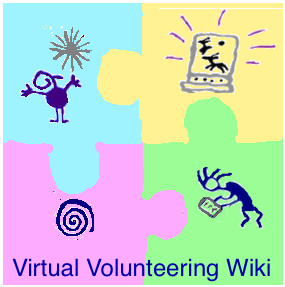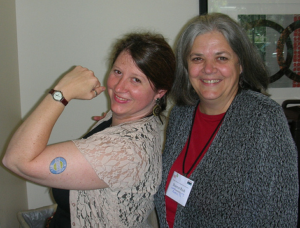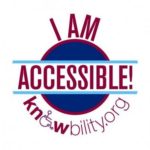Imagine if I announced that a one-day beach clean up, or a one-day walk-a-thon, that brought hundreds or thousands of people together for one-off service in support of a nonprofit organization or cause, wasn’t really volunteering. Imagine if I said it isn’t volunteering because most of the participants who are donating their time and service aren’t screened, aren’t interviewed, aren’t background-checked, and aren’t trained beyond maybe a 10 minute speech about things to keep in mind during the experience. Imagine if I also said it was because most participants may never volunteer again with that organization or for the cause.
Imagine if I claimed that people who sewed or knitted items from their home, in their spare time, for some nonprofit group helping kids in hospitals or people suffering from a particular disease, weren’t really volunteers. They also aren’t screened the way most other volunteers are, aren’t background-checked, and usually have no deadline for their work – they get it done when they get it done, if at all.
I would look ridiculous to make such claims. The volunteer management community would laugh me out of the workshop or conference (or the conference hotel bar, as the case may be). Or off the Intertubes.
Of course all of these activities are volunteering. In fact, they are all MICROvolunteering, without a computer! (most volunteer managers call such episodic volunteering, but the new name is much snazzier)
The folks behind the microvolunteering movement The Extraordinaries (though their web site is now called Sparked.com) continue to try to say microvolunteering isn’t virtual volunteering. Which is as preposterous as me claiming those other one-off volunteering gigs like one-day beach clean ups aren’t really volunteering. Of course microvolunteering is virtual volunteering: it’s unpaid, donated service in support of nonprofit organizations, provided via a computer or handheld device. How much time it may or may not take, and how volunteers are or aren’t screened or supported, is immaterial.
I’ve had an ongoing battle with the people behind the Extraordinaires for a while now. They burst online a few years ago, claiming that there was no need for traditional volunteering, or traditional volunteer management, because everything nonprofits need by online volunteers can be done through what they were calling microvolunteering: people who volunteered for just a few minutes at a time whenever they might get an inclination to help, from wherever they were. Web sites would be built. Topics would be researched. Logos would be designed. Marketing plans would be written. Children would be mentored. All by people waiting for a plane or during time outs at sporting events. No need to make time to volunteer — just volunteer whenever you have some spare time, even if that’s just for a minute or two.
I challenged them on various blogs and the ARNOVA discussion group, pointing out that, indeed, microvolunteering can work for some tasks – and I had been saying so since the late 1990s, when I called the practice byte-sized volunteering – but most certainly not for mentoring a child (online or face-to-face, mentoring is effective only if its a long-term, ongoing commitment that builds trust – something I learned when working with the National Mentoring Partnership in launching their standards for online mentoring) and many other activities undertaken by community-serving organizations. I pointed out that microvolunteering most definitely can work for something like logo design — which, in fact, I wrote about back in 2006, per the first NetSquared conference that highlighted several examples of such. But I also pointed out that successful volunteer engagement isn’t about just getting work done; it is, in fact, about relationship-building — recruiting people who could turn into donors, for instance, or raising awareness and changing behaviors — and it’s also about reserving certain tasks for volunteers specifically, because some tasks are actually best done by volunteers.
This recent blog shows that some of those arguments are starting to seep into their thinking – Hurrah! – but they still need to evolve their concept. They are right to point out that microvolunteering doesn’t employ some volunteer management techniques in the same way as other volunteering, but they just can’t get their mind around the fact that LOTS of volunteering doesn’t, like a one-day beach clean up doesn’t. But that doesn’t somehow negate microvolunteering as volunteering, or as virtual volunteering.
Volunteer management and support must be adjusted for a wide variety of volunteering scenarios, online and off; while there are certain fundamentals of volunteer management that are always the same for all volunteering, online or offline, microvolunteering or longer-term, such as capturing volunteer contact info, ensuring volunteers are invited to future opportunities, thanking volunteers for their contributions and showing volunteers how their service has been of value, other aspects of volunteer management have to be tailored to the unique situation, and that does, indeed, mean not recruiting micro-volunteers the same way as long-term volunteers, on or offline.
In addition to their continued refusal to accept that, indeed, microvolunteering is virtual volunteering, they also continue to make some other misguided statements, such as:
With microvolunteering, ‘You hire EVERY volunteer.’ The end result gets better as more people work on and peer-review your project. You turn no-one away.
You do NOT hire every volunteer in a microvolunteering or crowd-sourcing project. In fact, you reject MOST of them — for a logo design, for instance, most people’s ideas are rejected – most ideas are not used. For open source software design that allows anyone to contribute to the code, not every submission gets included in the released version. It doesn’t mean those volunteering efforts aren’t appreciated and that you shouldn’t thank them and celebrate such, but the reality is that you are not going to use most of the work submitted for such a crowd-sourcing endeavor.
And as for their comment that The end result gets better as more people work on and peer-review your project, I could point to dozens of pages on Wikipedia that have gotten worse as more people have worked on them. The idea that more volunteers automatically means better is something that only someone who does not work with volunteers regularly — particularly online volunteers — would say.
If they want to claim that microvolunteering is the coolest form of virtual volunteering, or even the coolest form of volunteering, I wouldn’t be quite so passionate in my arguments – what’s coolest is, ofcourse, entirely subjective. Of course, I’d still argue that it wasn’t — I’d be speaking as a person who has been both a long-term online volunteer and a micro-volunteer, and has recruited and managed both kinds of online volunteers. To me, mircrovolunteering is like a one-night stand: interesting/fun in the moment, but then quickly forgotten. Um, not that I know what a one-night stand is… Such might lead to something more substantial, but usually, it won’t – and that means it’s not for everyone.
But this fact Ben and Jacob will have to eventually accept: microvolunteering, online, is virtual volunteering. And it’s been going on long before the Extraordinaires showed up. Proposing that it isn’t creates only confusion, segregates them from terrific conversations and resources and networks, and holds them back from the full success they could have with their efforts; accepting that they are part of virtual volunteering would open many more opportunities for their endeavor and ensure their long-term success.
Also see:
Micro-Volunteering and Crowd-Sourcing: Not-So-New Trends in Virtual Volunteering/Online Volunteering
But virtual volunteering means it takes no time, right?
What online community service is – and is not





